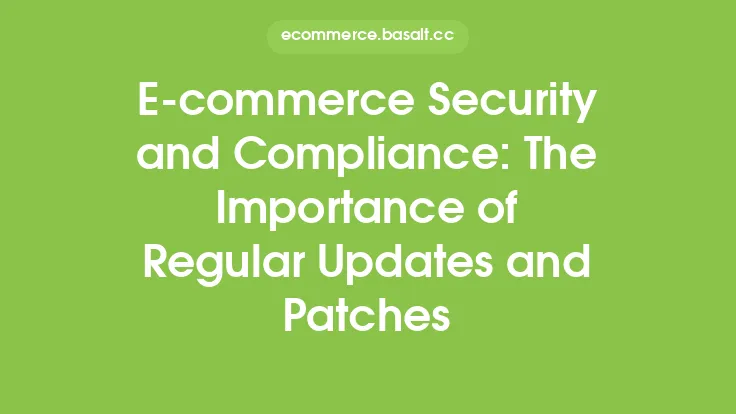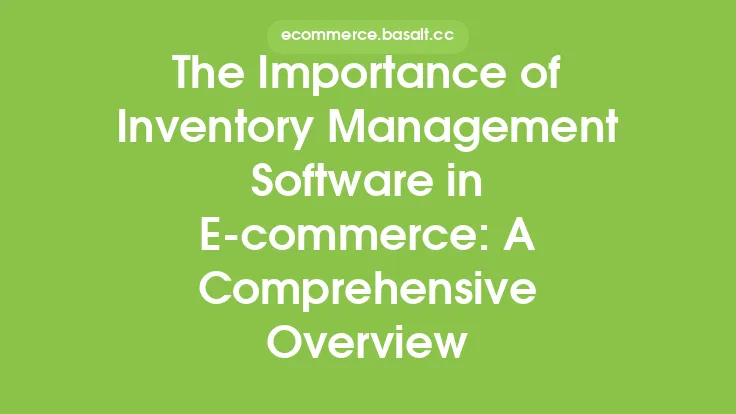Regular maintenance and updates are crucial for the success of an e-commerce store. A well-maintained store not only provides a better user experience but also helps to increase sales, improve customer satisfaction, and reduce the risk of security breaches. In this article, we will discuss the importance of store maintenance and updates, and provide tips on how to keep your store up-to-date and running smoothly.
Introduction to Store Maintenance
Store maintenance refers to the ongoing process of checking, updating, and improving the various components of an e-commerce store. This includes the website's design, functionality, content, and security. Regular maintenance helps to ensure that the store is running efficiently, and that customers can easily find and purchase products. It also helps to prevent technical issues, such as downtime, slow loading speeds, and errors, which can negatively impact the user experience and lead to lost sales.
Benefits of Regular Store Updates
Regular store updates are essential for several reasons. Firstly, they help to keep the store's content fresh and up-to-date, which is important for search engine optimization (SEO) and for keeping customers engaged. Secondly, updates help to fix technical issues, such as bugs and glitches, which can improve the overall user experience. Thirdly, updates can help to improve the store's security, by patching vulnerabilities and protecting against malware and other types of cyber threats. Finally, updates can help to add new features and functionality to the store, which can improve the customer experience and increase sales.
Types of Store Maintenance
There are several types of store maintenance that are important for e-commerce stores. These include:
- Technical maintenance: This refers to the ongoing process of checking and updating the store's technical components, such as the website's code, database, and server.
- Content maintenance: This refers to the ongoing process of checking and updating the store's content, such as product descriptions, images, and prices.
- Security maintenance: This refers to the ongoing process of checking and updating the store's security measures, such as firewalls, antivirus software, and encryption.
- Design maintenance: This refers to the ongoing process of checking and updating the store's design, such as the website's layout, colors, and fonts.
Best Practices for Store Maintenance
There are several best practices that can help to ensure that an e-commerce store is properly maintained. These include:
- Regularly backing up the store's data and files
- Regularly updating the store's software and plugins
- Regularly checking for technical issues, such as errors and downtime
- Regularly updating the store's content, such as product descriptions and prices
- Regularly checking the store's security measures, such as firewalls and antivirus software
- Regularly testing the store's functionality, such as payment processing and shipping integration
Tools and Resources for Store Maintenance
There are several tools and resources that can help with store maintenance. These include:
- Website analytics tools, such as Google Analytics, which can help to track the store's traffic and performance
- Technical monitoring tools, such as Pingdom and Uptime Robot, which can help to track the store's technical performance
- Security scanning tools, such as Norton and McAfee, which can help to identify vulnerabilities and protect against malware
- Content management systems (CMS), such as WordPress and Magento, which can help to manage and update the store's content
- E-commerce platforms, such as Shopify and BigCommerce, which can provide built-in maintenance and update tools
Common Store Maintenance Mistakes
There are several common mistakes that e-commerce store owners make when it comes to maintenance. These include:
- Not regularly updating the store's software and plugins
- Not regularly backing up the store's data and files
- Not regularly checking for technical issues, such as errors and downtime
- Not regularly updating the store's content, such as product descriptions and prices
- Not regularly checking the store's security measures, such as firewalls and antivirus software
- Not regularly testing the store's functionality, such as payment processing and shipping integration
Conclusion
In conclusion, regular store maintenance and updates are crucial for the success of an e-commerce store. By following best practices, using the right tools and resources, and avoiding common mistakes, store owners can help to ensure that their store is running smoothly, efficiently, and securely. This can help to improve the user experience, increase sales, and reduce the risk of security breaches. Whether you are just starting out or have an established store, regular maintenance and updates should be a top priority.




